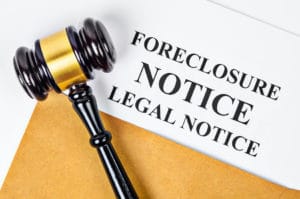 Whether to save money or buy a home outside of one’s budget, foreclosures are a solid choice. Banks place these homes on the market below their value in order to pay off the balance due on the loan. Although these properties are visible alongside traditional listings, the purchase process differs for each. Because extra steps are involved, buyers must explore foreclosures in detail before deciding if this is the right option for them. The following information examines how to find and buy a foreclosure property.
Whether to save money or buy a home outside of one’s budget, foreclosures are a solid choice. Banks place these homes on the market below their value in order to pay off the balance due on the loan. Although these properties are visible alongside traditional listings, the purchase process differs for each. Because extra steps are involved, buyers must explore foreclosures in detail before deciding if this is the right option for them. The following information examines how to find and buy a foreclosure property.
For informational purposes only. Always consult with an attorney, tax, or financial advisor before proceeding with any real estate transaction.
Where Are Foreclosed Homes Found?
Whether navigating a depressed or strong real estate market, it is possible for buyers to find foreclosures for sale by working with a trusted real estate agent, as they have many listing tools at their disposal. Real estate agents can search through the Multiple Listing Service, for example, to spot foreclosures as soon as they are placed on the market.
Additionally, government agency websites are a popular place to find these homes. The U.S. Department of Housing and Urban Development, or HUD, keeps a regularly updated list of foreclosures across the nation. Both Fannie Mae and the IRS maintain their own lists as well, providing plenty of ways for buyers to find their ideal home.
Other entities listing foreclosed homes online include:
- Auction houses
- Asset management companies
- Private organizations
If a buyer would like to find foreclosures the old-fashioned way, they can drive through town in their preferred neighborhoods and search for real estate signs indicating the property is a foreclosure or owned by the bank. Buyers can then call the real estate agent listed on the signage to schedule a showing and work toward owning that property.
Getting Preapproved for a Mortgage
Although cash is the preferred option, every buyer does not have enough money on hand to buy a foreclosure property, which is why mortgages are available. Because foreclosures often sell as fast as they are placed the market, getting pre-approved for a mortgage will benefit the buyer.
Through the mortgage pre-approval process, borrowers can secure the funds needed to purchase a home before finding their ideal property. With pre-approval completed and as foreclosures that match the ideal specifications become available, it will be possible for buyers to act fast.
The pre-approval process begins with the lender reviewing the borrower’s credit report in addition to examining monthly income levels; therefore, the borrower must be prepared to provide pay stubs, bank statements, and other supporting documentation.
Using this information about income, assets, and debts, the lender can calculate the debt-to-income ratio to see if the borrower will qualify for a mortgage. This ratio represents the percentage of a borrower’s monthly income that goes toward paying debt balances. If the debt-to-income ratio is too high, usually over 36 percent, then income must increase or debt balances must decrease before preapproval can occur.
When gaining mortgage pre-approval, it is important for borrowers to work with more than one lender in order to secure the best deal. Rates and terms will likely vary considerably, which is why borrowers should compare the offers side by side before selecting the one that provides the greatest benefits. Upon agreeing to the terms, the lender will provide a pre-approval letter that can be used to prove funding availability to real estate agents.
How to Buy Different Types of Foreclosed Homes
There are many types of foreclosed homes on the market, and the purchase process differs for each one. For a stress-free buying experience, buyers must understand how each type works in order to navigate the process with ease and secure the property. The following information explores different types of foreclosed homes and how to proceed with their purchase.
Pre-Foreclosures
When homeowners cannot fulfill their mortgage payment obligations, they may choose to sell the property to alleviate the stress on their finances. In order to sell it quickly and stop a foreclosure, they may choose to go forward with a short sale, also known as a pre-foreclosure, which is a type of sale authorized by the lender that allows the owner to sell the property at a loss.
Pre-foreclosures can save buyers a significant amount of money. Buyers must act fast because these properties are popular — especially to those wanting to fix and flip. A real estate agent can help find pre-foreclosures as they become available. The homes are not usually listed on traditional platforms, making them otherwise difficult to spot.
Because the current homeowner arranges the sale, most properties allow showings. The real estate agent can arrange a time to walk through and assess the condition of the residence and surrounding property. If the owner is onsite, the interested buyer can ask questions about the history and needs of the home.
Before committing to the purchase, it is wise for the buyer to have an inspection performed by a skilled professional where the condition of the property is assessed thoroughly. If the inspector finds no major issues, then the buyer can place an offer. Buyers must be open to negotiations, however, as the seller must try to fulfill as much of the loan as possible. Otherwise, the seller may end up responsible for paying the remainder of the loan balance.
Auction
To aquire a property quickly and below market value, foreclosure auctions are a wise choice. Banks place properties for auction to rapidly resolve open accounts and receive as much money as possible for each one. The starting bid may begin at 50 percent of the property’s value, depending on its condition and other key factors. The final price may be a lot higher, however, if many interested parties bid on the same property.
Banks will usually host the auctions at their location, though some have buyers visit the property itself to place their bids. Many investors congregate at these auctions in hopes of buying real estate at a low price, which creates a high-energy crowd and competition for desirable residences.
Because each bank sets their own terms for the auction, buyers should find out what they are before attending. The terms may indicate:
- Whether it is cash only or mortgages allowed
- The total buyer premium required, usually five to ten percent of the sales price
- How to place a bid on a property
- Preferred method for placing a deposit
- If it is okay to visit the property beforehand
At many auctions, buyers end up liable for any liens and encumbrances attached to the property, which means they may need to pay back taxes or cover other payments in addition to the price they paid for the property. The banks do not usually disclose those matters before starting the bidding process. Furthermore, the properties are sold as-is without an inspection or other assessments allowed. The buyer may be able to drive by to take a look, however, depending on the bank’s terms and restrictions.
The bidding process occurs quickly, especially for properties with a lot of interest. Therefore, it is important for buyers to have their budget in mind beforehand. Additionally, it is wise for buyers to avoid bidding wars at all costs, even if the property matches the buyer’s needs.
When a buyer submits the winning bid, they must promptly visit the clearing desk to finalize their purchase. The clerk will collect the initial payment, which may be the full price of the property or a minimum deposit. Auctions that allow for a minimum deposit require the buyer pay the full amount within 10 days.
REO
When properties do not sell in a foreclosure auction, the bank retains ownership and must choose a different direction with the sale. Many banks prepare the properties for listing on the real estate market by performing key repairs and renovations in addition to paying off tax liens and clearing the title. These properties are referred to as bank-owned properties, or REOs.
Because banks put time and money into preparing REOs for the market, they are not discounted as much as short sales and auction properties. If the buyer is working with a real estate agent, they can check the Multiple Listing Service to see what REOs are available in addition to the bank’s REO pages on their website. Once a suitable property appears, it is important for buyers to act fast, as many other buyers closely watch the market to spot REOs as well.
Because the condition of these properties may be questionable, it is wise to have an inspection and appraisal performed. The inspection will reveal any necessary repairs, while an appraisal reveals the true market value of the residence. Additionally, it is important for the buyer to have the title company run a search to confirm the absence of liens, back taxes, and other obligations that may be tied to the property. With this information, the buyer’s purchase decision will be much easier.
If the property is clear, then the buyer can submit an offer but should be prepared to wait. Unlike private real estate sales, many individuals must verify the residence will sell at an acceptable price. Most banks submit a counteroffer; therefore, buyers should aim low to start and take the chance to negotiate. Once a tentative agreement is reached, the bank may need an additional 10 days to finalize the offer through the corporate office.
Government-Owned
The U.S. Department of Housing and Urban Development gains control of properties from a number of government entities, including:
- Customs
- IRS
- FDIC
When homeowners cannot make payments on their FHA-backed mortgages, the property goes into foreclosure and transfers to HUD. Because that organization covers the balance of the loan, they take ownership of the property and place it for sale.
Regardless of what government entity the properties come from, HUD lists them all on their HUD Homes website. Certified real estate agents can assist in finding these properties and matching them to a buyer’s unique specifications.
HUD often sells the listed properties at a silent auction, which requires buyers to submit sealed bids to the approved agents. This process is streamlined while working with a certified real estate agent who will help acquire the professional appraisal completed by HUD and identify the ideal starting bid.
Within the first 30 days of the listing, only buyers who plan to use the property as their primary residence can make bids. After 30 days, the bidding floor opens to investors who intended to fix and flip the property or rent it out to make a profit.
While waiting for a response, interested buyers should verify all funding is ready, contact an inspector, and confirm with the lender that the property will abide by all their guidelines, especially if it is in need of renovations or repairs. Buyers may have to secure a rehab loan, which can take several weeks to complete. If the bid is accepted, HUD will allow the buyer to have the property inspected before closing.
If HUD does not accept any bids, then they may ask for a minimum net offer, which can be used by buyers to place a new bid. Once a bid is accepted, the buyer can call the inspector and prepare to move through the closing process to finalize the transaction.
With all these options available, buying a foreclosed home is possible, whether buyers navigate the process alone or with help from a real estate agent. Buyers can examine these options and decide which direction is best to start moving toward buying a foreclosure today.
For informational purposes only. Always consult with an attorney, tax, or financial advisor before proceeding with any real estate transaction.



